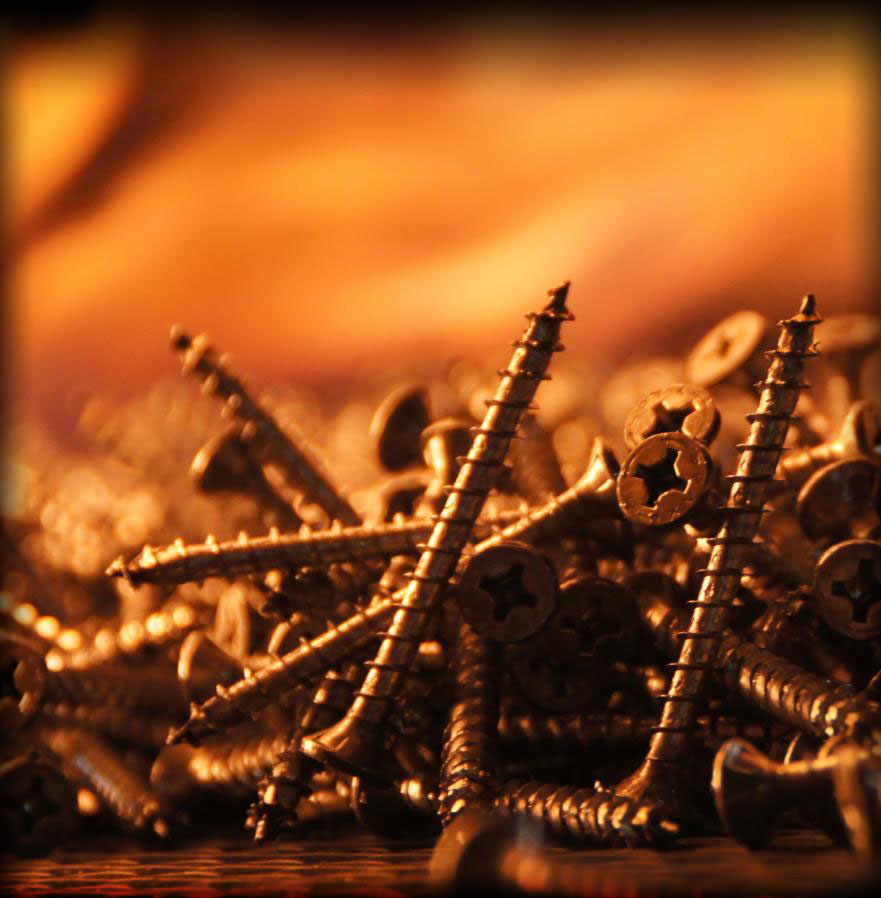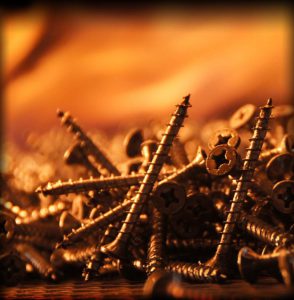Tips On Heat Treating Fasteners

In this process, the three most common types of furnaces used are: rotary, batch and continuous mesh-belt. Such an operation involves huge investment of energy and cost. Hence, it’s sensible to keep a few points in mind when heat treating fasteners.
Pay heed to the chemistry of the elements

The chemistry of an element plays an important role in influencing the reaction of heat treatment and capacity of the fastener to carry out its planned operation. Boron (in the range of 0.0005% to 0.003%) is one of the elements used as a hardening agent, although it does not significantly affect the formability and machineability. However, a fastener distributor should know that anything in excess of 0.003% Boron has a damaging effect on the impact strength of the finished material.
In the process of steelmaking, when free nitrogen does not bind up, boron nitrides are formed, cutting down the availability of boron. To counter this effect, aluminum or titanium is added in an appropriate proportion. Element chemistry is imperative in this regard, since these elements may slow down carburization.
Cleaning and drying of the parts
Even though the heat treatment process tolerates the damp parts, there is no reason why you shouldn’t pay attention to cleaning and drying the parts. You simply have to move the dirt from the surface of the parts to the disposal system. There are four process parameters that govern proper cleaning: element chemistry, energy, application of time and temperature. Cleaning can be done through hands, spray agitators, ultrasonics, dunking or through chemical and thermal actions. Contaminants on the surface for a long period of time can cause problems in functioning of the equipment.
Prevent bending of the parts and damaged thread
Damage to the thread is usually due to mishandling practices, such as dumping the tub into a loading conveyance equipment or when the fasteners, whether they are Monel 400 bolts or aluminum studs, are soft at the pre-wash section. Improper use of metal rod for clearing the jams can cause irreversible damage to the thread. Take another instance where a flat rivet falls down a quench chute to hit the bottom plate, causing it to bend. When the loading exceeds the length to diameter ratio, we get a bent fastener at the end of the operation. The operator should be aware of what needs to be done in case there’s a jam. When the equipment is under the maintenance down-time, you can check a few specific areas to identify real origin of the problem.
Take control of the annealing operation
Spheroidization is a midway step required to roll the wire into a smaller gauge without formation of cracks. For fasteners, it is an imperative process that assures the softness and formability of the steel. Annealing causes formation of cementite layer, which further breaks down into globular and spheroid form. The globules assist in cold deformation processes such as heading, rolling and bending.
Maintain uniform belt loading
A mesh-belt conveyor furnace functions efficiently when you maintain standardized belt loading and constant temperature profile for a given amount of time. Overload and mishandling can lead to shortening of belt life to an extent that it may last only about 6 months.
About the Author

Started my career in the fastener world in 1969 at, Parker Kalon Corp. a NJ based screw manufacturer located in Clifton, NJ working in inventory control, scheduling secondary production and concluding there in purchasing. In 1971 I accepted a sales position at Star Stainless Screw Co., Totowa, NJ working in inside sales and later as an outside salesman, having a successful career at Star I had the desire with a friend to start our own fastener distribution company in 1980 named: Divspec, Kenilworth, NJ. This was a successful adventure but ended in 1985 with me starting Melfast in August 1985 and have stayed competitive and successful to date. Melfast serves the OEM market with approximately 400 accounts nationally.